Our Projects
British Airways World Cargo Centre, Heathrow Airport
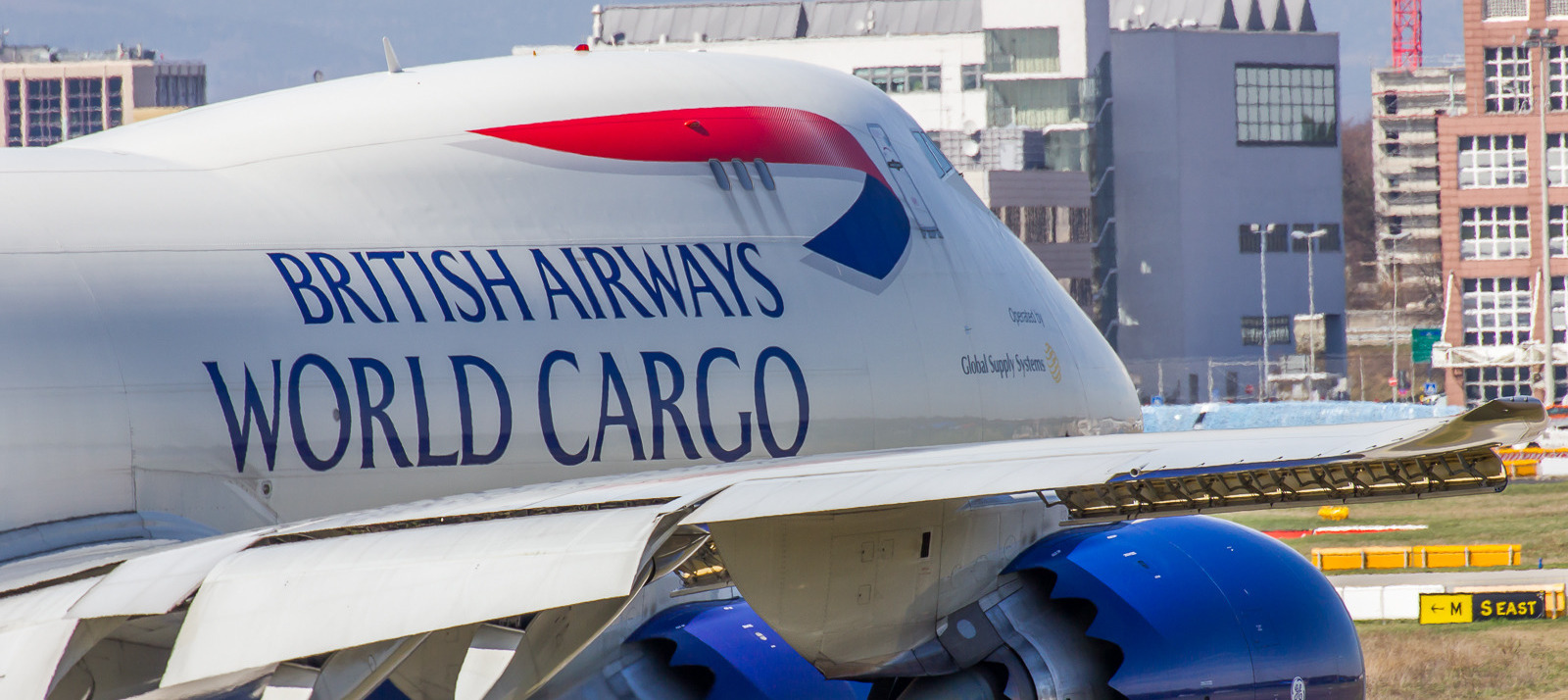
The British Airways World Cargo Centre manages 80,000 tons of air freight for British Airways through Heathrow Airport each year with a total revenue of £700 million annualy. The centre is fully sprinkler protected at roof level and at racking level. The sprinkler systems are controlled by 50no. Installation control stations supplied from the BAA Heathrow site fire water main and BA booster pump sets.
Incendia carried out a full review of the British Airways Authority and British Airways pumped water supplies following insurer’s tests which had found that the fire protection system requirements were not being achieved and the sprinkler protection systems within the centre were comprimised. This in conjunction with premature pump failure had greatly increased the fire risk for the client and the risk of business interuption.
Extensive examination of tests that had been conducted on the system and the configuration of the system were carried out by Incendia which required the inspection of the major plant items, instrumentation, system hydraulics and an understanding of the system operation.
Incendia compiled a thorough technical report which set out staged corrective actions and recommendations to resolve the deficiencies of the system and alterations required to overcome the premature pump failure. The report also set out the correct testing and maintenance procedures required to maintain the system in its optimum operational condition.
The review and technical report provided by Incendia provided a reduction in British Airways and insurers risk of asset, client cargo and buisness interuption due to fire.
Saltend Cogeneration Plant, UK
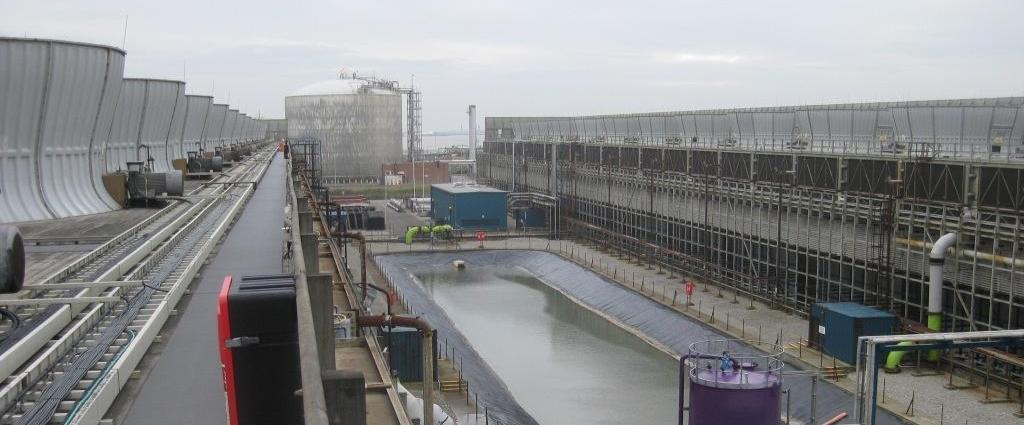
Saltend Cogeneration plant is a 1200 megawatt (MW) power station commissioned in 2000 and located on the Northern shore of the Humber estuary. The plant provides power to the National Grid by means of three single shaft, combined cycle, natural gas and steam turbine generator modules.
Each turbine generator module is provided with ten mechanical draft cooling cells. The cooling cells are arranged in two 247 metre long timber construction cooling towers each consisting of 15 cells. Each cell is provided with a GRP stack, GRP axial fan, spiral bevel helical fan gearbox and a 175kW rated fan motor located at fan deck level.
The cooling towers circulate salt water taken from the Humber Estuary at a rate of 48,090m³/hr and at a water temperature range of 17.1º to 23.1º Celcius. The salt water is also chlorinated with Sodium Hypochloride as an effective biocide.
Incendia acted as the clients fire engineering consultants for the cooling tower fire protection replacement project. The project involved the removal of the existing fire protection system due to major corrosion and replacement with a new waterspray fire protection system.
Following a risk assessment carried out on the cooling towers which reduced the level of fire protection required, Incendia prepared the tender documentation for the project. The tender documentation consisted of technical performance and preliminaries specifications supported with design schemes.
Due to the severe corrossion of the existing fire protection system and the aggressive environment within and around the cooling towers a new approach to the equipment location, piping routes and materials was adopted. Essential was the correct selection of corrosion resistant materials to ensure the systems minumum service life of 35 years
Cadburys Monkhill Confectionery, UK
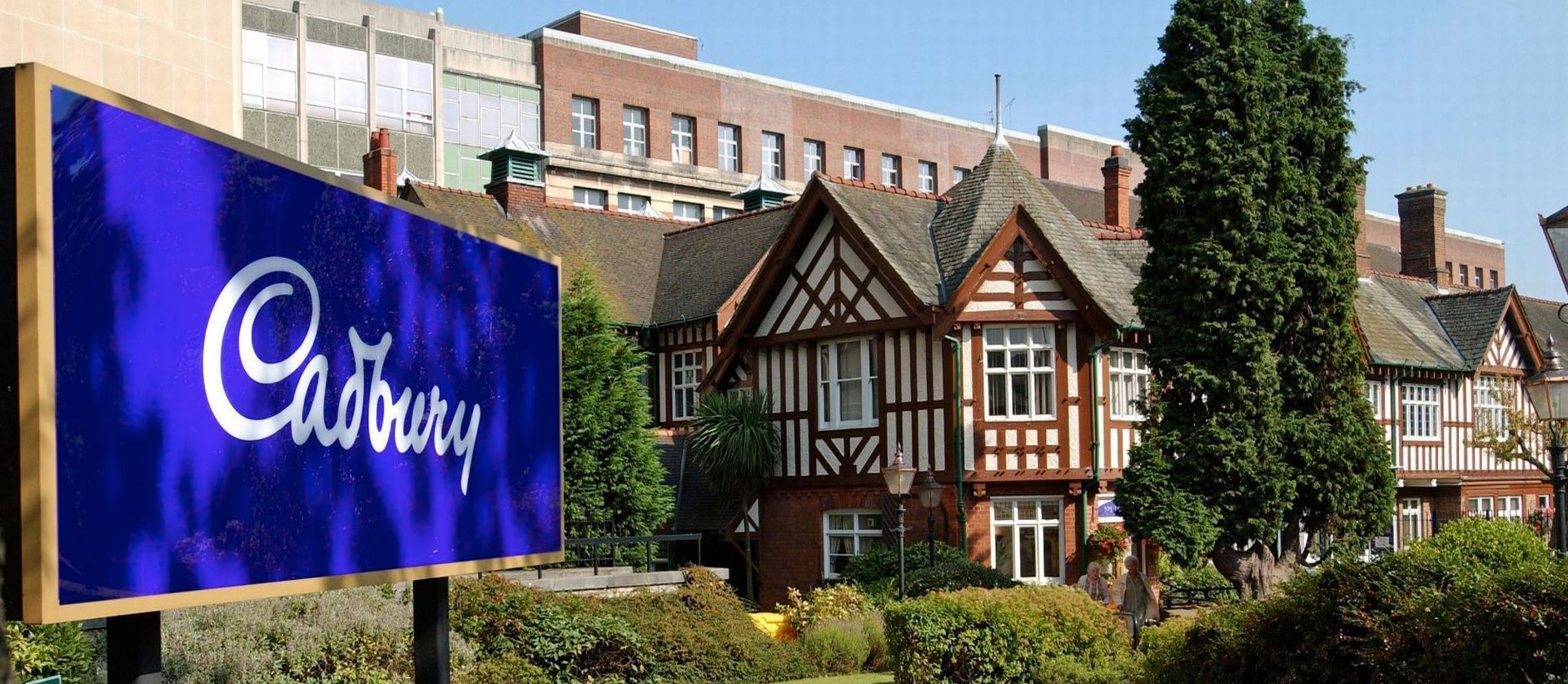
Monkhill Confectionery Limited, Pontefract manufactures and markets sugar confectionery products and popcorn under the brand name Butterkist.
In 2007 the new 95,000sqft popcorn manufacturing factory was completed. The new factory was built to replace the existing factory which was destroyed by fire in 2005. The factory contains the popcorn manufacturing facilities at ground level and a high bay racking storage facility for the incoming ingredients and product dispatch loading bays.
As part of the factory construction a sprinkler system designed to European Standards was installed to cover the manufacturing and high hazard storage areas. The sprinkler system was supplied by a dedicated 411m³ water storage tank and two diesel fire pumps located in a pumphouse and
connected to the system via an underground trunk main. The pumps also supplied the external fire hydrants in the lorry loading bay.
Following an insurer’s inspection, it was found that the sprinkler protection within the high hazard storage areas could not be supplied by the fire water tank for the required duration. This greatly increased the risk of fire losses for the Client and Insurers and the risk of business interuption in the event of a fire.
The hydraulic analysis of the system carried out by Incendia allowed the system to be augmented to meet the required system performance and the stored water volume of the tank to the satisfaction of the insurers.
Skikda Oil Refinery, Algeria
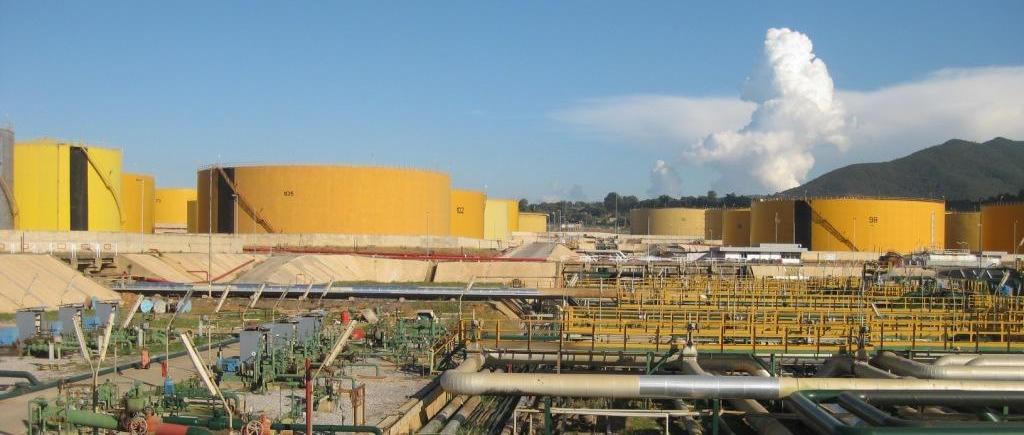
Skikda oil refinery is the largest oil refinery in Africa with a total output of 350,000 barrels per day of refined oil. The plant can process 16million tons per year of Saharian blend and sour crude oil. The plant was built in 1980 and is comprised of eight crude oil refining units. The plant contains a total of 235 large crude and refined oil storage tanks and process gasses are stored in 12 large sphere tanks.
Incendia carried out the design and engineering to NFPA standards for the €45million EPCC9 Rehabilitation and Adaptation project. The project involved the upgrade and enhancement of the existing fire system water supplies, fire water mains and fire fighting capabilities in the plant.
The enhancements allowed for the fire fighting capabilities of the refinery to cater with two simultaneous major tank fires at any location.
The EPCC project incorporated a new fire water pumping facility which comprised of new fire water tanks with a total storage capasity of 40,000m³,
and six new 5.5kv electric and 650kw deisel fire pumps housed in a new pumphouse with a total pumping capasity of 102,000 litres per minute. A new PLC and power supply system was engineered to control the operation and monitoring of the new water supplies. 11Km of new carbon steel fire water piping ranging from 12” to 26” was engineered throughout the plant to enhance the existing fire water system.
120 new 7500lpm AFFF foam/water monitors were engineered throughout the plant to provide a means of manual fire fighting for each oil storage tank and gas sphere in the plant. These were supported with 95 new stand post fire hydrants located throughout the plant.
Waterspray cooling and foam top pourer protection was engineered to protect 19 cone roof and floating roof refined oil storage tanks with diameters of 57.5m and 63.0m. The foam protection to the tanks is controlled by four foam pumping stations each with 50m³ of stored flouroprotein foam concentrate.
Alto 415 Logistics Centre, UK

Alto 415 is a distribution centre warehouse located in the Lymedale Business Park, Newcastle-Under-Lyme, Staffordshire, midway between Manchester and Birmingham. The warehouse covers an area of 270m by 140m providing a total area of 38,000m² and is formed of four pitched roofs with the apex of each roof extending to 19m above the finished floor.
In February 2012 the warehouse was fitted out with 125m long double row racks throughout the warehouse to a height of 16m. The fit out project incorporated the installation of a sprinkler system to protect the warehouse and the Category III stored goods.
On behalf of the specialist sprinkler contractor, Incendia carried out the full design, engineering and hydraulic analysis of the new sprinkler system to protect at roof level and within the double row rack in accordance with the Loss Prevention Council design and installation codes incorporating the European sprinkler design standards EN12845.
In total 4,500 sprinklers were installed at roof level on four gridded pipework roof installations and valve stations, designed to deliver a density of 10mm/m²/min throughout warehouse. The double row racks were provided with 22,000 sprinklers installed in the longitudinal flues controlled by fourteen in-rack gridded pipework installations and valve stations. The sprinkler system water supplies comprised of one electric and one diesel fire pump each rated at 5200lpm at 8.5bar and drawing water from a 725m³ water storage tank.
As well as providing all the design and fabrication drawings, Incendia also carried out the hydraulic analysis calculations to prove the performance of the sprinklers, confirm the pipe sizing and size the water supplies to provide the required flow and pressure to the roof and in-rack protection operating simultaneously.
Tobruk Oil Refinery & Majid Oil Field, Libya
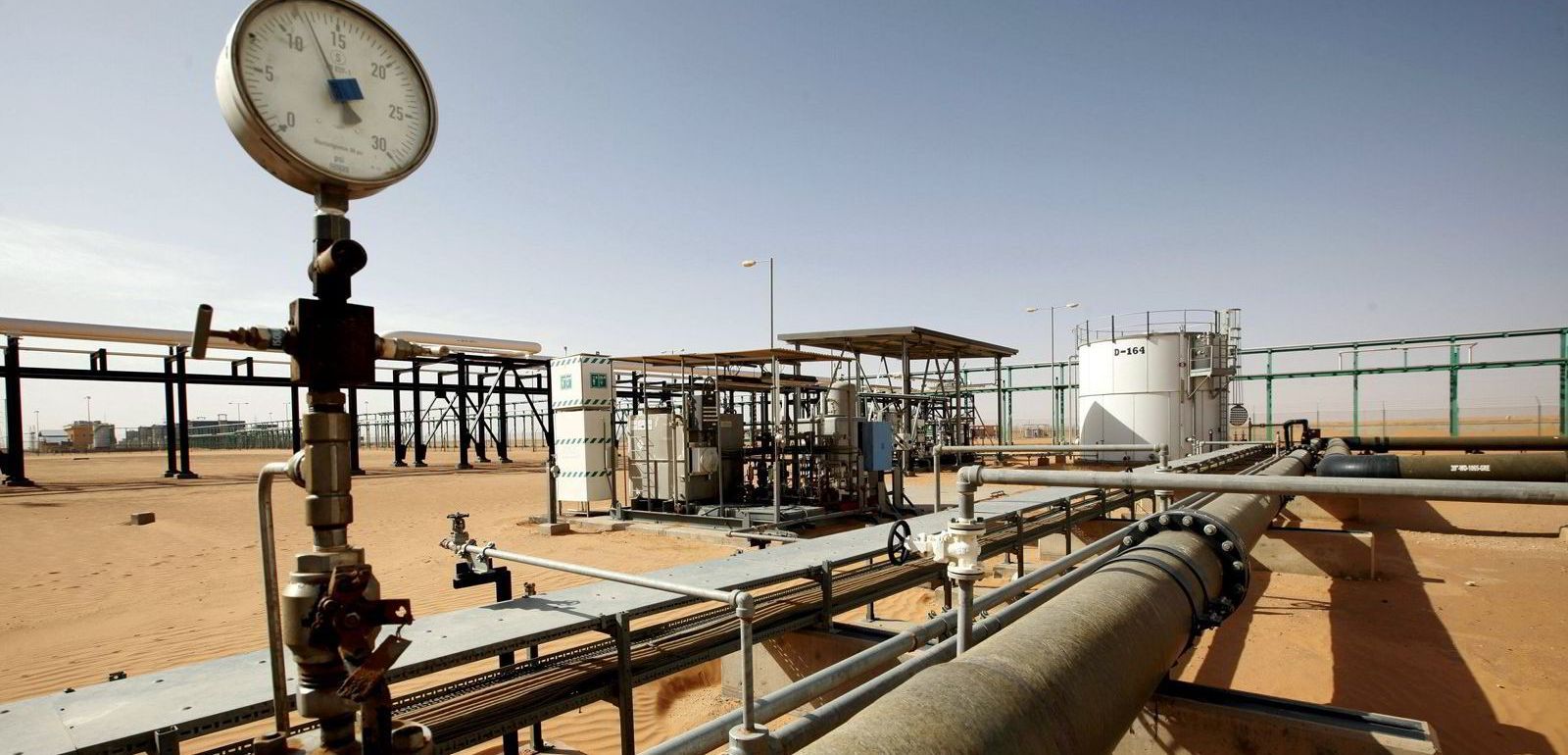
The Arabian Gulf Oil Company (AGOCO) is one of the largest oil companies in Libya controlling eight oil fields, two refineries and an oil terminal representing approximately 40% of the total Libyan crude oil production.
Tobruk Oil Refinery which has been on stream since 1985 is sited on the mediteranian coast to the East of Libya. The refinery has a capasity of 20,000 barrels per day of refined oil. Majid Oil Field is sited to the south of Benghazi in the South East of Libya. The oil field extracts saharian crude oil for transfer to Tobruk.
Incendia carried out the design and engineering to NFPA standards for the crude and refined oil tank fire fighting enhancement project. The project involved the upgrade and enhancement of the existing semi-fixed foam protection systems and waterspray cooling systems to cone roof and floating roof tanks.
The project at the Tobruk refinery incorporated the top pourer foam system enhancement for 19 floating roof refined oil tanks with a diameter of 32.0m. The existing semi-fixed protection was enhanced to incorporate three foam stations each containing two AFFF foam concentrate bladder tanks and balanced pressure foam proportioners.
The project at the Majid oil field incorporated waterspray cooling systems and base injection foam protection to four crude oil storage tanks each with a diameter of 24.0m. The new foam protection incorporated a single foam station containing two AFFF foam concentrate bladder tanks and in line high back pressure foam generators.
Incendia was responsible for the full design and engineering of the systems, foam concentrate stations, fire main routes and confirmation of the equipment and piping selection through hydraulic analysis.
Henrietta House, UK
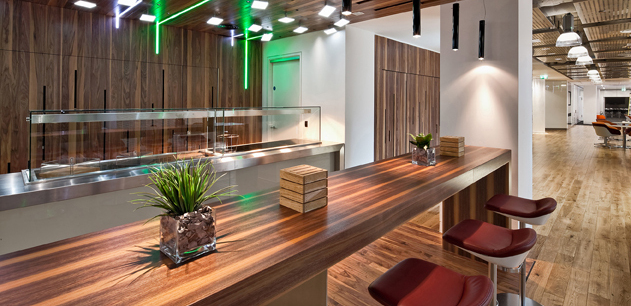
Henrietta House is a prestigious office development in West London close to Oxford Street. With the new end user CB Richard Ellis moving into the previous home of Diagio Plc in mid 2011, a major refurbishment of the 10 storey building was carried out by Managing Contractor 8Build over a 23 week programme starting in August 2010. The refurbishment involved retaining the existing pumped sprinkler system protection at all levels with the exception of the Lower Ground level where a full removal of the sprinkler protection was carried out.
On behalf of the specialist fire engineering contractor, Incendia carried out a full compliance review of the existing building fire protection in accordance with the Loss Prevention Council design and installation codes incorporating the European sprinkler design standards EN12845.
Incendia compiled a thorough technical report which set out the corrective actions and recommendations to resolve the
deficiencies of the existing sprinkler system and the alterations required to ensure the system was in full complience with the European and LPC Design and Installation Standards.
In addition to the complience review for the building, Incendia on behalf of the specialist fire engineering contractor carried out the full design and engineering of the sprinkler protection to the Lower Ground floor level. The design and engineering of the sprinkler protection was carried out to RIBA stage K, and included technical support during the LPCB approval and installation stage of the protection.
Due to the complexity and variety of different materials used in the finishes of the Lower Ground Level, the challenge was to ensure that the sprinklers remained unobtrusive and co-ordinated into the architect’s vision. This was achieved by the selection and location of concealed ceiling and sidewall sprinklers, and selection of the various cover plate finishes.
55-57 Pont Street, UK
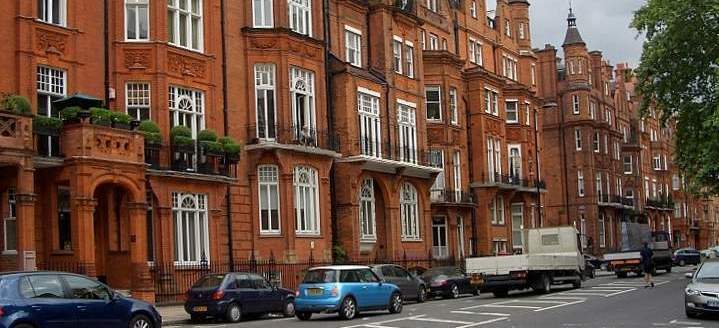
Numbers 55 and 57 Pont Street are two seven storey Victorian red brick terrace houses situated in Knightsbridge, London. The houses were laterally converted into five luxury private apartments with a communial entrance and a basement level. The basement level comprised of a car parking facility for each apartment, store rooms, electrical rooms, refuse and plant areas. The basement level is accessed from the communial entrance via a staircase and passenger lift, and vehicles access the car park via a vehicle lift at the rear of the building.
As a condition of the planning concent for the project, the local authority insisted on an automatic fire control system in accordance with the Building Regulations, within the basement level due to the specific risk and hazard of the carpark, plantrooms and stores.
Incendia acted as the specialist fire engineering consultants for the projects consulting engineers to develop the proposal
for the basement fire control system.
The system had to be effective for controlling a class A fire within the plant and store rooms and a class A and B fire within the car park and also achieve the requirements of the Building Regulations – Approved Document B – Vol 2.
The considerations for the system were the limited available area for the system plant and the layout and construction of the basement level.
A low pressure water mist system was selected and developed by Incendia as the fire control system for the basement level due to its effectiveness on class A and B fires and its compatability with the considerations.
Incendia prepared the tender technical performance specification stating the design and construction of the system which was accepted by the local authority as fulfilling the requirements of the Building Regulations.
Esprit Retail Store, UK
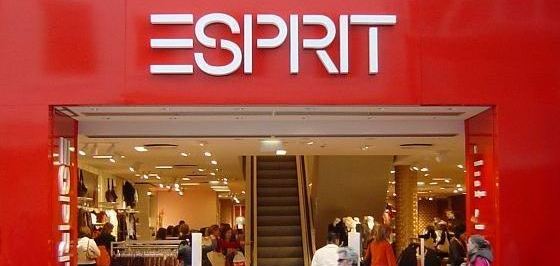
Esprit is an international clothing company operating more than 800 retail stores worldwide occupying total selling space of over 1.1 million square metres in more than 40 countries.
The UK flagship store in Regent Street, London covering 2,500 square metres of sales area over two floors closed for a major refurbishment. The refurbishment included the removal of the existing ceilings throughout, provision of a new 245 square metre stock room, new sales area raft ceilings a new ventilation system and a major reorganisation of the sales floor. The existing sprinkler system required modification to correctly protect the new store layout at soffit and ceiling level.
On behalf of the specialist sprinkler contractor, Incendia carried out the design of the sprinkler system modifications in accordance with the Loss Prevention Council design and installation codes incorporating the European sprinkler design standards EN 12845.
Due to record drawings of the existing sprinkler system not being available, Incendia carried out a full survey of the sprinkler protection throughout the store to determine the existing soffit sprinkler positions, ceiling sprinkler connection outlets, pipe routes, sizes and levels. The information obtained from the site survey was then used to produce drawings which accurately reflecting the installed sprinkler protection.
The new sprinkler protection at soffit and ceiling level was designed to suit the new store layout and to ensure that the protection complied with the requirements of the design codes. The brief of the specialist sprinkler contractor was to retain as much of the existing sprinkler protection as possible, which although proved to be a major challenge due to the condition of the existing protection, was achieved.
Incendia delivered the design works within with the clients installation programme period and achieved LPCB Approval for the project.
GSK Research & Development Site, Ware, UK

GlaxoSmithKline is one of the pharmaceutical industry leaders, with 85 manufacturing sites in 37 countries, and 32,000 employees involved in the development and production of product, providing an estimated 7% of the world's pharmaceutical market.
The GSK R&D Ware site is located in Hertfordshire, to the north of Greater London. It is one of the oldest in GSK’s network of sites having been established in 1897.
Today, it is responsible for the development and introduction of many of the company’s new products, in either tablet or respiratory form, with around 900 people working on the site either supporting the development of new products or the supply of many of GSK’s most important established products.
Due to the age of the existing site fire water system, Incendia were instructed to carry out a full review of the fire water system’s pumping capabilities on the site.
The aim of the review was to verify if the flows and pressures provided by the existing fire pumps were capable of providing the system demands required by the sprinkler, drencher and external hydrant systems on the site in line with the requirements of the GSK Insurers, FM Global.
Incendia carried out a full hydraulic analysis of the system incorporating the demands of the various fire protection systems around the site supplied by the fire pumps.
Following the hydraulic analysis a thorough technical report was compiled which set out the recommendations to resolve the deficiencies of the system and the alterations required. The report also prescribed changes required to the existing fire water pumps and specified the size of the new replacement pump complete with a design proposal for the foundation, piping and equipment changes within the pumphouse.
Zueitina Oil Terminal, Libya
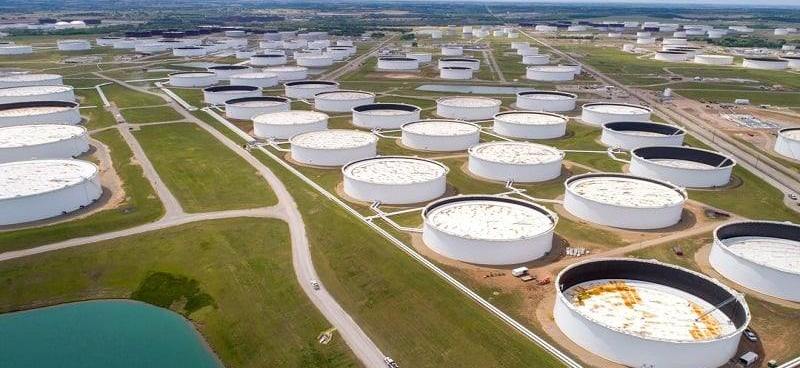
The Zueitina Oil Company is a Libyan owned company based in Tripoli which carries out a whole range of oil operations. The company commercially produces 94,000 barrels of crude oil per day and 530,000 cubic feet of gas per day through the Intisar and EPSA oil fields.
The Zeuitina Oil Terminal is located 90 miles south of Benghazi on the Eastern edge of the Gulf of Sirte. The terminal is used to export ‘Zeuitina Blend’ crude oil. The export from the terminal equates to 20% of the total Libyan export of crude oil.
Incendia carried out the technical review to NFPA standards for the Fire Fighting System Upgrade project. The project involved the upgrade and enhancement of the existing fire system water supplies, fire water mains and fire fighting capabilities in the terminal.
The review encompassed an assessment of the existing and proposed new fire fighting capabilities at the terminal to cater for a major crude oil tank or dike fire. The 17 tanks under consideration ranged from 66.0m to 109.0m diamater and 15.0m to 19.0m in height. The largest crude oil tank contained 1,000,000 barrels of crude oil.
under consideration ranged from 66.0m to 109.0m diamater and 15.0m to 19.0m in height. The largest crude oil tank contained 1,000,000 barrels of crude oil.
Various worst case fire scenarios were reviewed including rim seal fires using rim seal foam pourers, full surface tank fires and dike surface fires using 7500lpm foam/water monitors. The rim seal pourers were connected to foam pumping and proportioning stations. A proposed new fire water ring main routed throughout the terminal would supply the existing foam stations and new foam/water monitors
Incendia developed a hydraulic model of the site’s existing and proposed firefighting system, and developed the resource requirements for the extinguishment of the worst credible fire event.
A report was then prepared using latest international and industry standards as guidance to give observations on the existing fire protection system plus detailed analysis and recommendations for the required upgrade.
Hillsborough Castle, Nothern Ireland
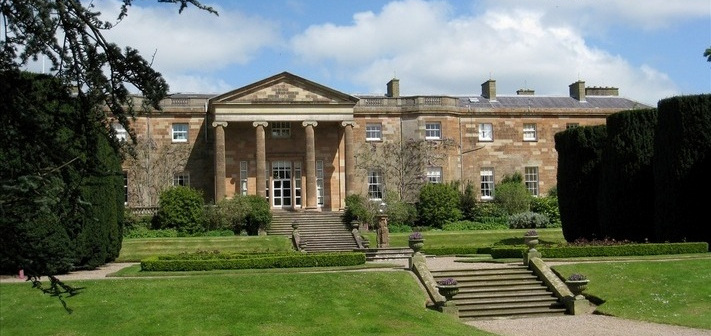
Hillsborough Castle is the official UK government residence in Northern Ireland. It is the residence of the Secretary of State for Northern Ireland, and the official residence in Northern Ireland of HM Queen Elizabeth II and other members of the British Royal Family when they visit the region, as well as a guest house for prominent international visitors. It was the location of the signing of the Anglo-Irish Agreement in 1985.
Hillsborough Castle, which is located in the village of Hillsborough, County Down, is a Georgian mansion built in the 18th century. The mansion is built over five levels including government offices, state rooms, royal apartments, guest reception rooms, living accommodations and back of house areas. In 1996 the mansion was fitted with an automatic sprinkler system to LPC/BS5306 part 2 standards to protect all areas of the mansion including the roof attic spaces.
Due to extensive corrosion found within the sprinkler system the mansion was re-fitted with new sprinklers, CPVC fittings and equipment constructed of corrosion resistant materials.
Incendia was instructed as an independent Fire Engineering Consultant and with our extensive knowledge and experience of sprinkler systems to carry out a full and thorough inspection of the completed installation as a final inspection of the works prior to the “Sprinkler Replacement Project” completion and handover to the client
The inspection was carried out to confirm the correct selection, replacement and installation of the sprinklers, CPVC fittings and equipment and to verify to the client the level of workmanship by the installing contractor and included in full technical report with corrective actions.
Gatwick Airport, UK

Gatwick opened as an aerodrome in the late 1920s; it has been in use for commercial flights since 1933. The airport has two terminals, the North Terminal and the South Terminal, which cover areas of 98,000 m2 and 160,000 m2 respectively.
It operates as a single-runway airport with 46.1 million passengers passed through the airport. The two terminals, as well as operational areas house retail units, restaurants, bars and stock rooms.
Incendia provides all design and engineering services for the sprinkler protection systems within the terminals for all base build developments and retail fit outs.
We also carry out the annual Review of Hazard inspections for the retail stock rooms to ensure that the capabilities of the sprinkler protection is not compromised.
The Mercian, 212 Broad Street, UK
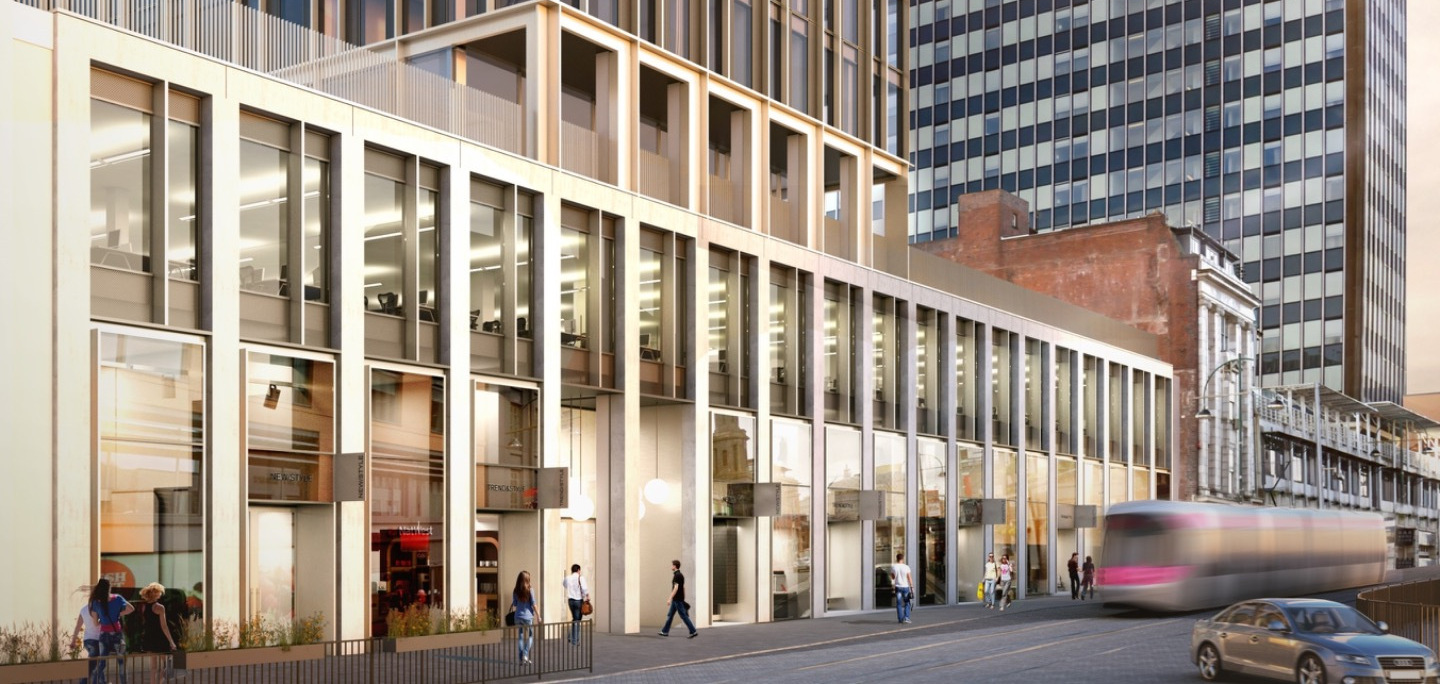
The Mercian is one of the tallest residential building in the UK. Also known as 212 Broad Street it is a 132-metre-tall residential skyscraper on Broad Street in Birmingham, England. The building is 42 storeys in height, consisting of a 39-storey tower which sits on a three-storey podium with over 2,800 m2 of community amenity space.
The building is sprinkler protected throughout by means of a residential and commercial sprinkler system as well as a a pumped wet rising main fitted with outlets on all floors.
Incendia was engaged by Imtech the MEP specialists to carry out Third Party independant inspections on the sprinkler and wet rising main systems to highlight any deviations from the design codes and any deficiencies in workmanship.
The reports generated from multiple inspection ensured that the systems were delivered in full compliance with the standards and installed to a high quality.
13 Stratford Place
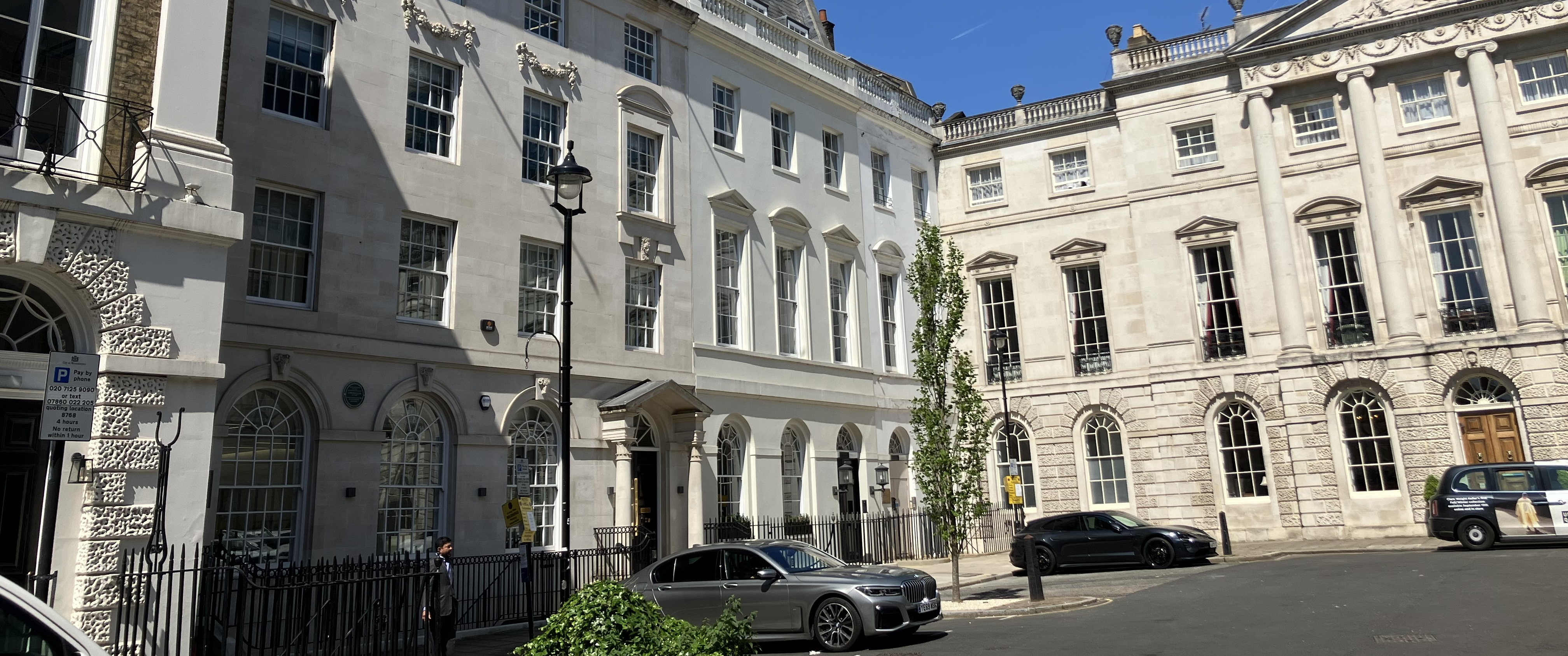
13 Stratford Place is a seven storey Heritage grade II listed building built in 1774 in Marylebone, London. The address was once home to the poet Edward Lear, famed for his limericks - including The Owl and The Pussycat.
The terraced building refurbishment project provided for resedential and office floors above ground level, with gallery display areas at basement level. Due to the number of above ground storeys and the open Georgian staircase serving the residential floors, the building required sprinkler protection to compensate for the building not meeting building regulations.
Incendia acted as the clients specialist consultant to develope the sprinkler protection design scheme proposals and specification to RIBA stage 4.
The residential sprinkler system fed from duplicate booster pumps drawing directly from the water authority main, was developed to protect all areas of the building to the requirements of BS9251 inclusive of Life Safety enhancements. With original feature ceilings and cornices retained, the pipe routes and sidewall sprinkler positioning needed to be sympathetic to the building fabric so as not to detract from the historical features.
GSK Research & Development Site, Stevenage, UK

The 92-acre GlaxoSmithKline R&D Stevenage site is located in Hertfordshire, to the north of Greater London. It is one of two GSK global R&D hubs, specialising in biotechnology and early-stage life science.
The Stevenage site was opened in 1994 with the fire fighting capabilities formed of a site fire water system, which comprised of a below ground site ring main, site-wide pillar fire hydrants and automatic suppression systems. A central water supply consisting of fire water storage tanks and fire water pumps generated the total water flow and pressure for the ring main system.
Incendia was engaged by GSK to evaluate the existing fire water system, including the pump house arrangement, hydrants and fire main section valves, with regard to age, operation and condition, and provide improvement recommendations. Additionally to carry out a comprehensive hydraulic analysis of the water supply capabilities.
The final report addressed the clients concerns, highlited necessary equipment replacements, proposed actions and modifications to improve the system, provided a robust maintenance program, and verified the abilities and deficiencies in the water supply capabilities.

